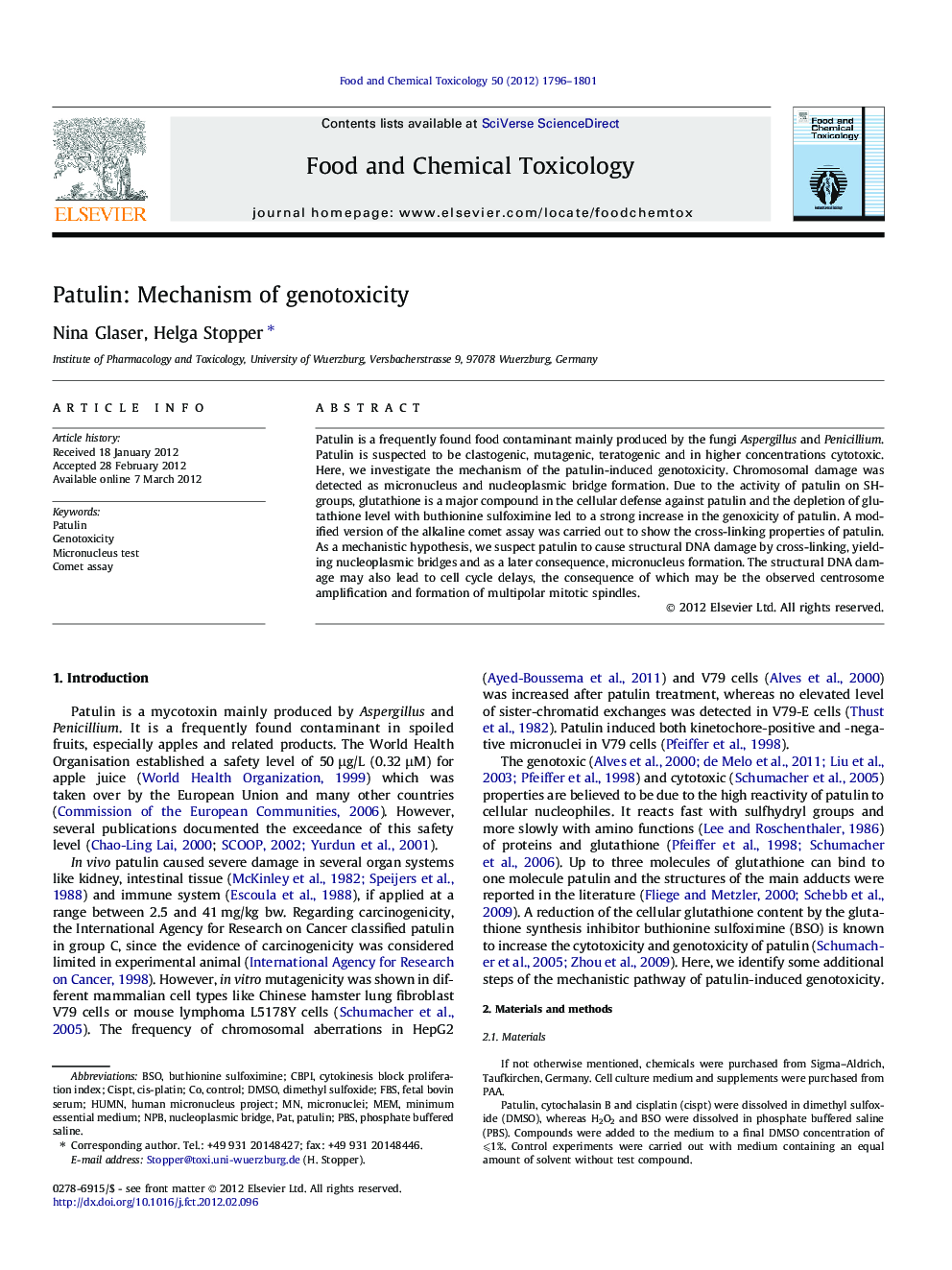| Article ID | Journal | Published Year | Pages | File Type |
|---|---|---|---|---|
| 5852548 | Food and Chemical Toxicology | 2012 | 6 Pages |
Patulin is a frequently found food contaminant mainly produced by the fungi Aspergillus and Penicillium. Patulin is suspected to be clastogenic, mutagenic, teratogenic and in higher concentrations cytotoxic. Here, we investigate the mechanism of the patulin-induced genotoxicity. Chromosomal damage was detected as micronucleus and nucleoplasmic bridge formation. Due to the activity of patulin on SH-groups, glutathione is a major compound in the cellular defense against patulin and the depletion of glutathione level with buthionine sulfoximine led to a strong increase in the genoxicity of patulin. A modified version of the alkaline comet assay was carried out to show the cross-linking properties of patulin. As a mechanistic hypothesis, we suspect patulin to cause structural DNA damage by cross-linking, yielding nucleoplasmic bridges and as a later consequence, micronucleus formation. The structural DNA damage may also lead to cell cycle delays, the consequence of which may be the observed centrosome amplification and formation of multipolar mitotic spindles.
⺠Apple products are a source for exposure to the mycotoxin patulin. ⺠Increased DNA damage was detected after in vitro treatment of cells with patulin. ⺠Cross-linking may be the mechanism for nucleoplasmic bridge formation. ⺠Cellular glutathione influences the genotoxicity of patulin.
